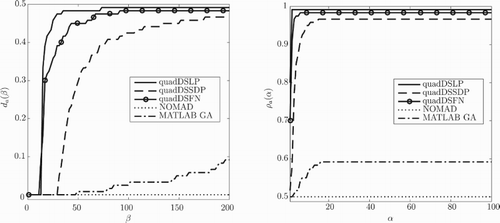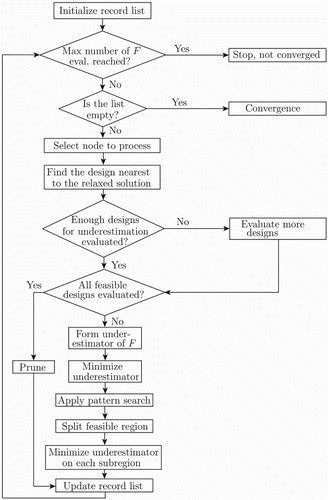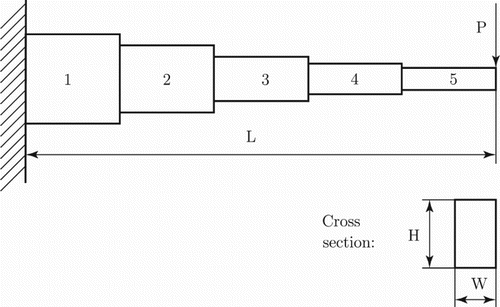Figures & data
Figure 1. Illustration of the quadratic underestimating function . The objective function F is evaluated at the set of sample points
(illustrated by the dots).
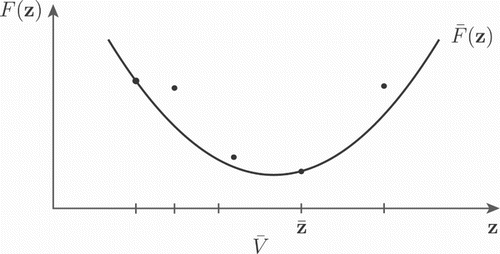
Figure 2. Illustration in of the nearest edge projection splitting strategy. The split is identified across the edge
–
of the minimum spanning tree corresponding to the designs
by projecting (illustrated by the dashed line) the solution to (Equation3
(3a)
(3a) ), in terms of
, onto the tree.
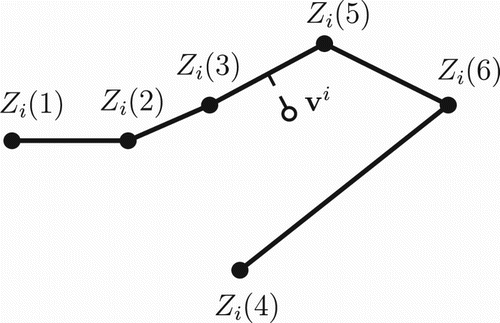
Figure 5. Data profiles and performance profiles
for three variants of quadDS, the MATLAB GA and NOMAD applied to 120 instances of the sparse artificial problem with
.
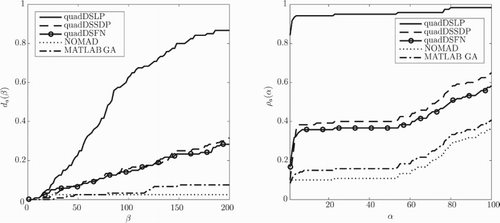
Figure 6. Data profiles and performance profiles
for three variants of quadDS, the MATLAB GA and NOMAD applied to 120 instances of the fully artificial problem with
.
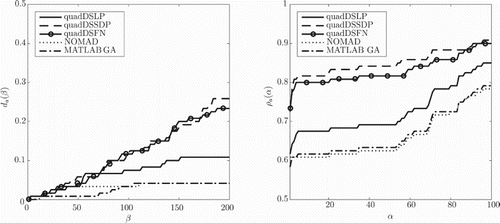
Figure 7. Data profiles and performance profiles
for three variants of quadDS, the MATLAB GA and NOMAD applied to 120 instances of the beam problem with
.
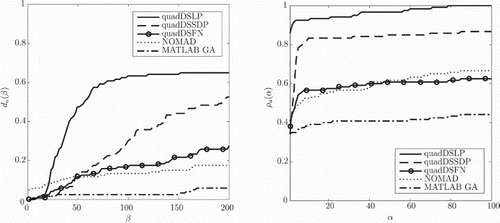
Figure 8. Data profiles and performance profiles
for three variants of quadDS, the MATLAB GA and NOMAD applied to 120 instances of the tyres selection problem with
. Note that
for all values of β and
for all values of α, because NOMAD did not solve any of the instances of the tyres selection problem within the maximum allowed number of objective function evaluations.
